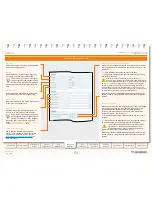
100
D14049.04
JULY 2008
Grey Headline
(continued)
TANDBERG
VIDEO COMMUNICATIONS SERVER
ADMINISTRATOR GUIDE
Introduction
Getting Started
Overview and
Status
System
Configuration
VCS
Configuration
Zones and
Neighbors
Call
Processing
Bandwidth
Control
Firewall
Traversal
Appendices
Applications
Maintenance
Clustering, Peers and Alternates
The IP Addresses of each Peer in the zone to which you are connecting are configured in the
Location section of the Edit Zone page. To access this page:.
VCS Configuration > Zones
•
.
You will be taken to the
Zones
page. From here, click on the name of the zone you wish to edit,
or click
New
to create a new zone.
Zones Zone [1..200] Neighbor Peer [1..6] Addres
•
s
Zones Zone [1..200] TraversalClient Peer [1..6] Addres
•
s
Peer 1...Peer 6 address
Enter the IP Address or FQDN of each Peer in the remote cluster.
The order in which the Peers in the remote VCS cluster are listed here does not matter.
Neighboring the Local VCS to a Cluster
You can neighbor your local VCS (or VCS Cluster) to a remote VCS Cluster; this could be a Neighbor,
Traversal Client, or Traversal Server to your local VCS. In this case, when a call is received on your
local VCS and is passed via the relevant zone to the remote cluster, it will be routed to whichever
Peer in that neighboring cluster has the lowest resource usage. That Peer will then forward the call
as appropriate:
to one of its locally registered endpoints (if the endpoint is registered to that Peer)
•
to one of its Peers (if the endpoint is registered to another Peer in that cluster)
•
one of its external zones (if the endpoint has been located elsewhere).
•
When configuring a connection to a remote Cluster, you should configure the relevant zone with
details of all the Peers in the Cluster. Adding this information to the zone will ensure that the call is
passed to that Cluster regardless of the status of the individual Peers.
Note that when you are configuring a connection to a remote cluster, you need to enter the
IP Address of all Peers only when they are
Neighbor
or
Traversal Client
zones. You do not do this for
Traversal Server zones, as these are not configured using IP Addresses.
!
Systems that are configured as Alternates (Peers) must
not
also be configured as
neighbors to each other, and vice versa.
















































